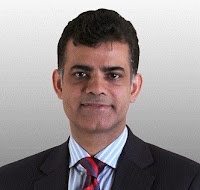While all eyes on the expected budgetary sops for the
struggling infrastructure and real estate sectors, there has been some positive
news emanating from different parts of the country during the last couple of
months, which can rejuvenate the construction industry as a whole from its
current precarious state.
Navi Mumbai
International Airport
The Ministry of Civil Aviation has recently cleared the
proposal to build the much-delayed Rs 15,000-crore Navi Mumbai International
airport. The government has given an in-principle go-ahead for financial bids
or Request For Proposals (RPFs), which will be soon shared with the four
bidders shortlisted for the project, according to official sources. The four
bidders are GMR Group, GVK-led MIAL, Hiranandani Developers along with Zurich
Airport and Mia Infrastructure with Tata Realty and Infrastructure.
The airport is expected to commence operations from October
2019, while the developer and operator will be required to pay an annual
concession fee prior to that. The fee would range from Rs 5 crore in the first
year to Rs 1,250 crore from the 40th year of operation.
The government is expected to earn Rs 17,000 crore during
the sixty-year period, the net present value of which is likely to be nearly RS
2,045 crore. It is also clarified that the airport project will be awarded only
for 30 years (and not 60 years), with extension periods of 10 and 20 years,
while the ten-year extension period beyond the 30th year would be on the basis
of the operational performance of the airport operator.
The winner of the Navi Mumbai Airport project will also get
a Rs 3,000-crore interest-free loan from City and Industrial Development
Corporation (CIDCO), to be repaid over a period of 10 years.
Sewri–Nhava Sheva
Mumbai Trans Harbour Link gets the Centre’s nod
After being stalled for several months due to the lack of
environmental clearances, the Sewri–Nhava Sheva Mumbai Trans Harbour Link
received an in-principle approval from the Ministry of Environment and Forests (MoEF).
To receive the final clearance, the Mumbai Metropolitan Region Development
Authority (MMRDA) is required to prepare a fresh application for tribal
rehabilitation in the forest area. The project is worth Rs 12,000 crore and the
tendering process is expected to commence soon, while MMRDA is working out a
formal loan agreement with the Japan International Cooperation Agency(JICA) for
funding the project.
Deadline set for the
Coastal Freeway
The Maharashtra government has set 2019 as the deadline for
the completion of the Coastal Freeway from Nariman Point to Kandivali. The
Central Government has released a notification amending the Coastal Regulation
Zone norms, permitting the reclamation of land for the coastal road.
Telangana gets RS
41,000-cr road, highway projects
The Central Government has announced road projects worth RS
41,000 crore for Telangana; these include two express highways from Hyderabad
to Bengaluru and Vijayawada. The government has also offered to provide further
assistance in case a new national highway is proposed for the state.
NCRPB to assist nine
transport infrastructure projects in Uttar Pradesh and Haryana
The National Capital Region Planning Board (NCRPB) has announced support for seven
transport infrastructure projects in Uttar Pradesh (UP) and two in Haryana together costing Rs 7838
crore, which would help considerably in resolving traffic and pollution
issues. The NCRPB would extend a loan
assistance of Rs 3,113 crore for these projects.
The UP projects include the construction of a 10.30-km,
six-lane elevated road in Ghaziabad, expected to be completed by the end of
2016. This road would extend from UP Gate to Raj Nagar Extension, connecting NH-24
with NH-58, while also serving as a bypass on the Kosambi–Mohan Nagar–Vaishali
section.
On completion, the travel time between UP Gate and Hindon
bridge is likely to reduce to around 15 minutes from the current 50 minutes.
The UP projects also include the 29.70-km Noida–Greater
Noida Metro Project, which is awaiting final approval from the Central
Government.
Among the projects proposed in Haryana is the development of
the 52.33-km Manesar–Palwal Expressway, connecting NH-8 with NH-2, which is
expected to be completed in 12 months. The improvement of the 38.41-km
Gurgaon–Pataudi–Rewari road on SH-26 and the development of a 5.80-km elevated
road on NH-10 from Chhotu Ram Chowk to Old Bus Stand in Rohtak are the other
upcoming projects in Haryana.
Maharashtra defers
revision of ready reckoner tax rate to April 1
The Maharashtra government has decided to defer revising the
ready reckoner rates to April 1 instead of January 1. This decision is aimed at
aligning any changes in the rates with the government’s tax revenue targets for
the financial year. Thus, homebuyers can avail themselves of the existing rates
for three more months.






















